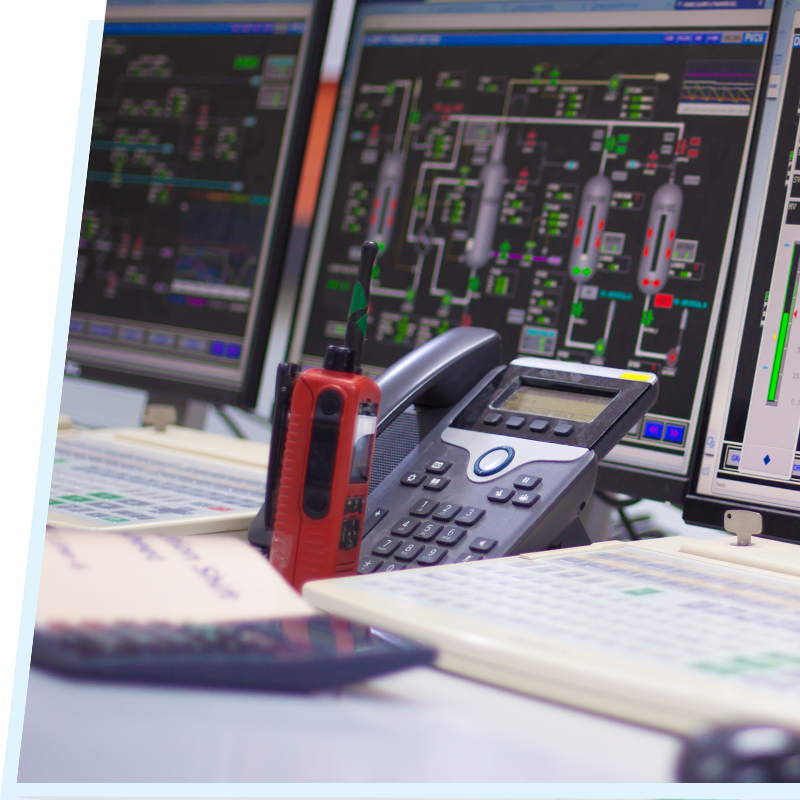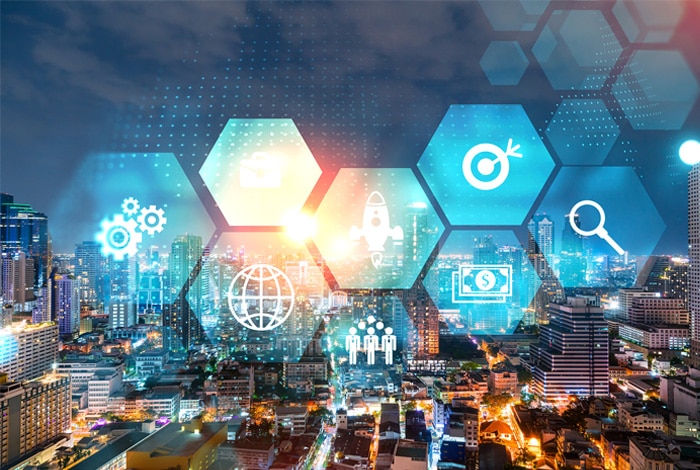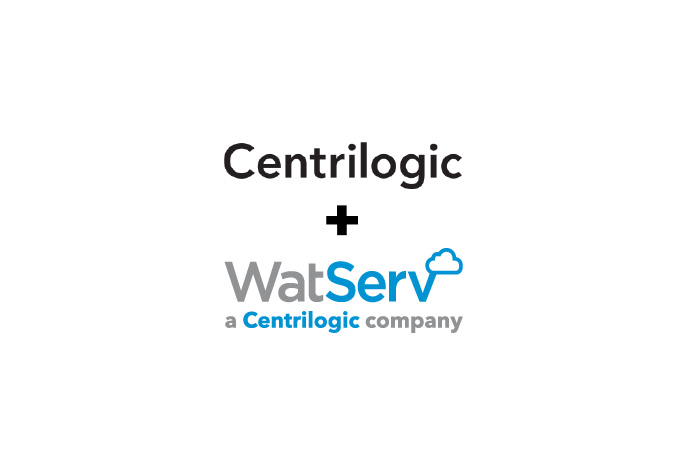The Complete Guide to Secure Remote Access
By WatServ
June 29, 2022
Over the past two years, remote access requirements have changed.
As companies have gone from working in offices to remote and hybrid arrangements, remote access capabilities and security protocols have had to adapt to keep up.
In this guide, we provide an overview of what secure remote access means, why it’s important and where you can start when it comes to best practices and management tools.
What is Secure Remote Access?
In a nutshell, secure remote access refers to a combination of processes, services and software that manages employee access to data, applications and resources from remote locations.

When employees access their company’s network from home or remotely (in other words, not from within company premises), there are unique risks.
The most common risks include:
- Unsecured Wi-Fi networks: When employees are working remotely, particularly on public Wi-Fi networks such as airport or coffee shop networks, there is increased risk of security breaches. There is also the case if an employee’s home Wi-Fi is not properly secured.
- Bring your own device (BYOT): As remote work becomes more of the norm, a lot of employees are using their own devices, such as laptops, mobile phones and tablets. These devices may not have the same security measures in place as corporate devices do, leaving company assets and data exposed.
- Human nature: Just like anyone, employees can get busy and distracted – or even manipulated – and end up exposing sensitive information. Employees who don’t have an understanding of basic security threats, such as phishing emails, can leave an entire company exposed to cyberattacks.
- Lack of training: With technology changing rapidly, not all companies have the resources to keep their IT team trained on the skill sets needed to secure access. This is especially true for SMBs who have limited time and resources.
- Lack of IT access: Simply by its nature, remote access usually restricts IT teams from certain access. A lack of visibility into employees’ endpoints or monitoring employee risky behavior, such as log-in sharing or leaving a device unattended, can risk company-wide cybersecurity exposure.
Why is Secure Remote Access Important?
With the rapid shift to work from home, many employees are now accessing company networks from various locations across multiple endpoints (laptops, mobiles, even printers).
In some cases, more employees now work remotely than they do from an office. 25% of professionals now work remotely and that number is only expected to grow into 2023.
This means that security measures that were once taken to manage on-premise access need to be rethought in order to support both worker productivity and cybersecurity.
Secure Remote Access Technologies
Addressing remote access is a multifaceted approach, with many tools at your disposal.
Since secure remote access isn’t about a single technology, options for companies include implementing various company technologies and policies, as well as taking actions to change user behavior.
Here are several key technologies that can be used to facilitate remote access:
1. Virtual Private Networks (VPNs)
Virtual private networks (VPNs) are one of the most common and well-known forms of enabling secure remote access, and are available for nearly all devices, including mobile phones and tablets.
VPNs typically use public internet to connect to a private network through an encrypted tunnel. This shields your device from unauthorized entry. VPNs can be either remote (for individual users to connect to a network) or site-to-site (for networks to connect to each other).
The most common VPN protocols include: Internet Key Exchange version 2 (IKEv2), Layer 2 Tunnelling Protocol (L2TP), Open-Source Virtual Private Network (OpenVPN) and PPTP Point-to-Point Tunnelling Protocol (PPTP).
2. Multi-Factor Authentication (MFA)
Multi-factor authentication (MFA) and two factor authentication (2FA) are other tools companies can layer in for additional security.
MFA and 2FA operate on the basis that users must provide “something they have” and “something they know” to log in to a network. An example of this is an authentication token from their mobile device and password.
3. Zero Trust Network Access (ZTNA)
Zero Trust Network Access (ZTNA) is a remote access technology that offers a higher level of protection because it assumes “zero trust”, as the name implies. Under ZTNA, each time a user tries to connect, they are required to reauthenticate.
4. Single Sign-On (SSO)
Finding the right level of security friction is a balancing act for many companies. Make security too tight and it will have an adverse effect on productivity. Make it too lax and you create vulnerabilities.
Single sign-on (SSO) is often an answer to this. It requires the user to sign on with only one set of credentials in order to access all of their applications and data.
5. Endpoint Device Security
Whether employees bring their own device (BYOD) or are issued company-owned hardware, maintaining oversight of these endpoints is difficult in remote scenarios.
To help ensure all devices comply with corporate security policies and protocols, it’s advisable to conduct regular audits of endpoint devices.
It’s also important to put in place sufficient endpoint security measures to ensure:
- Patches are up to date
- Antivirus protection and a firewall is being used
- Dangerous processes are prevented
- Confidential data is not being cached
6. Privileged Access Management (PAM)
Privileged access management (PAM) is used to manage and monitor secure access to company data and assets, from any location. It lets IT managers see what users have been accessing various systems and monitors for unusual behaviour.
Additionally, security professionals often use the principle of “least privilege,” meaning that employees are only granted access to those files and systems that they need in order to do their jobs effectively. This essentially limits the extent of exposure, particularly of highly confidential and valuable information.
What Else Can Be Done to Support Secure Remote Access?
Nearly one third of cybersecurity threats happen because of user behavior. Whether it’s intentionally malicious behavior – or merely a lack of education – behaviors can create serious security concerns.
In order to mitigate cybersecurity risks that come with employees accessing company data remotely, here are a number of additional strategies and practices that companies can put in place:
1. Make Sure People are Equipped with Tools They Need to Do Their Jobs Remotely
Remote workers want to be productive and equipping them with the tools they need is essential in achieving that. These tools should offer the right amount of security friction that doesn’t impede workflows.
Platforms like Azure Virtual Desktop (AVD) allow remote workers to seamlessly access company data and applications from anywhere. With built-in security, multi-factor authentication and layers of security, secure remote access can be achieved.
2. Offer Training and Education on an Ongoing Basis
Educated employees are empowered employees. Teaching your employees what to watch for, addressing risky behaviors, and giving them the information they need to effectively do their jobs remotely is essential for the health of the organization as a whole.
3. Be Clear in Company Policies and Procedures
The last thing an organization needs is to create policies and procedures that are unclear or inaccessible.
Secure remote work policies and procedures should be organized and accessible to staff, company-wide. Further, questions, comments and suggestions from team members should be welcomed and addressed accordingly.
4. Reward Positive Security Practices
At the end of the day, organizations are run by people, and those people need to know that what they’re doing is not just appropriate, but helpful for the team and the company on the whole.
Recognizing and rewarding these behaviors goes a long way to ensure these behaviors are repeated. Doing so also fosters a corporate culture of positivity, encouragement and loyalty.
5. Undertake Continual Monitoring
Finally, as part of all cybersecurity policies and protocols, action plans for monitoring and testing should be clearly defined.
Monitoring environments for any unusual activity or signs of potential threats can get your team ahead of the threat, essentially stopping a cyberattack from happening or before too much damage has occurred.
As part of secure remote work best practices, it’s also a good idea to implement regular system tests to look for potential vulnerabilities.
Work With a Security-Focused Cloud Solutions Partner
While CIOs can build comprehensive secure remote work policies and procedures, there’s still much implementation, monitoring, updating and testing required. For many organizations, this is a highly complex job that requires a lot of resources.
Working with a security-focused cloud solutions partner can help your IT team stay focused on their core business.
Find out more about how WatServ can help with your organization’s secure remote access needs by scheduling a call with one of our cloud professionals today.
About
WatServ is an IT solutions provider that helps organizations digitally transform through cloud technologies and managed services.
Serving clients as a trusted advisor since 2006, WatServ provides experience-tested, strategic solutions across all stages of the digital transformation journey. Clients choose WatServ to migrate infrastructure and applications to the cloud, secure critical data, implement disaster recovery, deploy virtual desktop, enable data-readiness for productivity solutions and manage IT environments.
Our clients span a broad range of industries, and we’re a global supplier of IT services for many Brookfield Portfolio Companies. To help our mid-size clients, we provide scalable offerings that simplify cloud adoption and drive business optimization. For enterprise clients, we co-create cloud solutions that enable stability and efficiency for complex IT tools and processes.
With more than 15 years of experience, WatServ has a track record of delivering quantifiable business results and a superior client experience. Ranked as one of Canada’s Top 100 Solution Providers for the last three years in a row, WatServ is always on.

